You wake up after a night of celebratory cake feeling groggy, irritable, and with a pounding headache. But you didn’t drink any alcohol. What you’re feeling is a “sugar hangover,” and it’s very real.
This isn’t just in your head. It’s your body’s direct reaction to being overloaded with sugar. The spike and crash in your blood sugar levels can leave you feeling foggy, tired, and craving the exact thing that caused the problem.
This guide will show you the ten most common signs of a sugar hangover. You’ll learn why you feel so bad and get a simple, fast plan to feel better quickly. You’ll also find ways to stop the after-effects of eating too much sugar and break the cycle for good.
What Is a “Sugar Hangover,” and Why Does It Happen?
The Blood Sugar Rollercoaster
1. The Spike
A sugar binge floods your blood, spiking glucose levels.
Did You Know?
A single 12oz (355ml) can of soda can have ~39g of sugar. The AHA recommends <25g (women) / <36g (men) of added sugar *per day*.
2. The Crash
Your body releases a flood of insulin, overcorrecting and causing blood sugar to plummet.
Symptoms Appear:
This crash is what causes fatigue, irritability, shakiness, and anxiety.
3. The Vicious Cycle
The “crash” signals an energy emergency, triggering intense cravings for more quick sugar.
Expert Tip:
Break the cycle! Choose a snack with protein + fiber (like an apple with peanut butter) to stabilize.
While “sugar hangover” isn’t an official medical term, the awful symptoms are real. They come from your blood sugar going on a wild ride. This happens in two parts.
When you eat a lot of simple sugar (like in cake or soda), it hits your bloodstream fast. This causes a quick, big jump in your blood glucose levels.
This is called after-meal high blood sugar. In response, your body releases a lot of insulin. Insulin’s job is to move that sugar out of your blood and into your cells for energy.
Your body releases too much insulin. It works too well and pulls too much sugar out of your blood. This makes your blood sugar levels drop quickly. This sudden drop is the “crash,” and it’s what causes you to feel tired, shaky, and irritable.
Your body thinks it’s an emergency, so it releases stress hormones like adrenaline. This can make you feel anxious and moody as your body tries to get your sugar levels back to normal. This whole rollercoaster is the “sugar hangover.”
1. Deep Fatigue and Tiredness

This is the most common sign of the “crash” phase. Glucose is your body’s main fuel, and when your blood sugar drops suddenly, your cells are starved for energy. This isn’t just feeling a little sleepy; it’s a deep, sudden exhaustion that can make even small tasks feel like climbing a mountain.
Your brain, which uses a huge amount of glucose, recognizes that there isn’t enough fuel to go around. As a result, your cells slow down their functions, leading to this profound sense of tiredness.
The initial sugar rush from a sweet treat gives you a quick burst of energy, but it’s always followed by a sharp drop. This up-and-down cycle leads to major energy swings that can leave you feeling sluggish and drained for hours.
You might find yourself struggling to get through the afternoon or waking up feeling like you haven’t slept at all, even if you went to bed on time.
2. A Pounding Headache
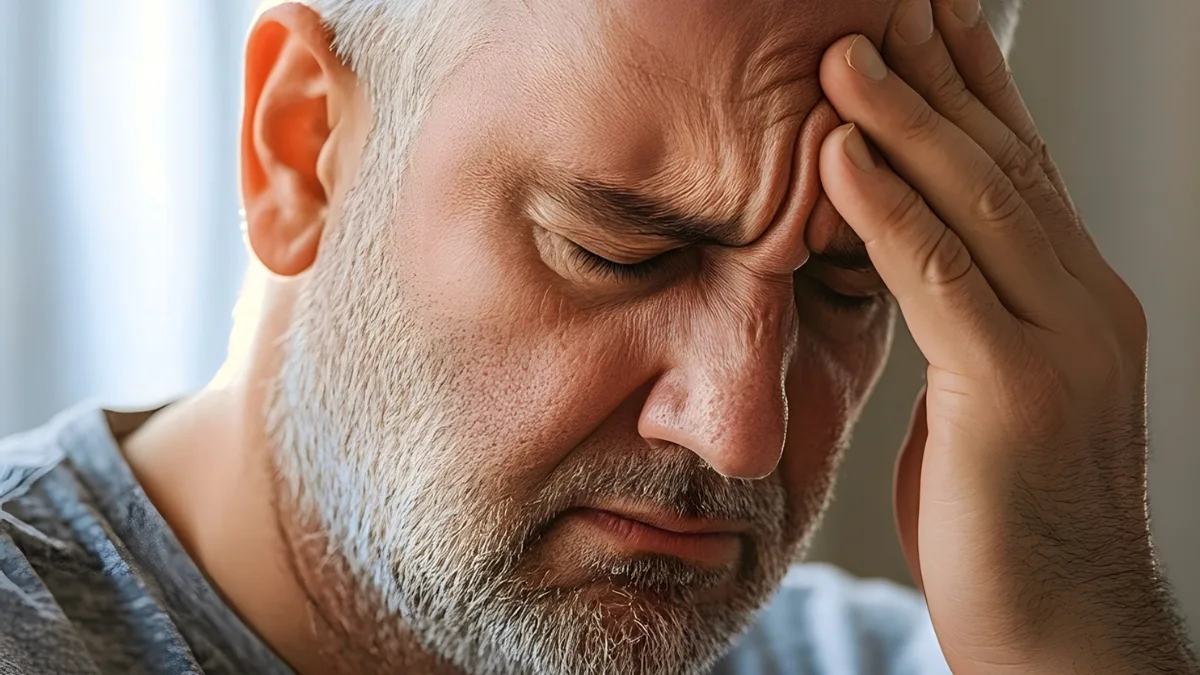
A sugar-induced headache can be triggered by both the initial spike and the later crash in your blood sugar. First, when your blood sugar is high, your body tries to balance things out by pulling fluid from your tissues. This process can quickly lead to dehydration, which is a very common cause of headaches.
Then comes the crash. The rapid drop in your blood sugar triggers the release of stress hormones like adrenaline. These hormones can cause the blood vessels in and around your brain to tighten and then expand.
This change in blood flow often results in a dull, throbbing headache that you might feel most intensely in your temples.
3. Brain Fog and Trouble Focusing
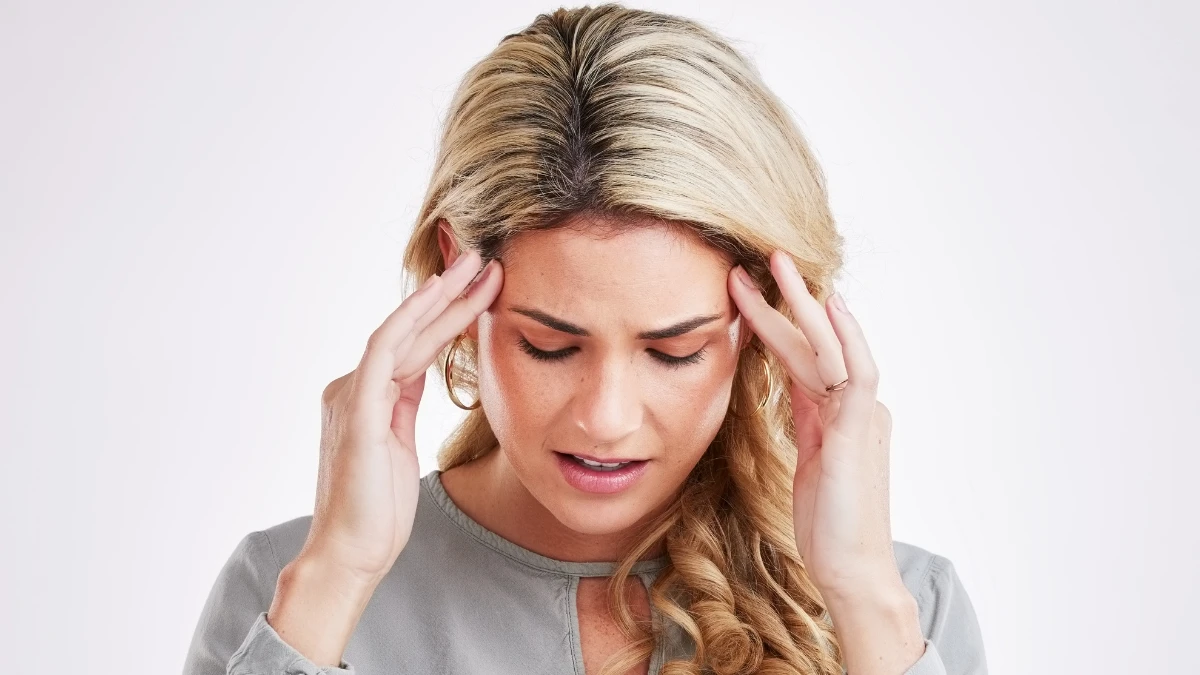
Your brain uses more glucose for energy than any other organ in your body. It depends on a steady, reliable supply to function properly. When you eat too much sugar, that fuel supply becomes completely unpredictable. Going from a huge surplus to a sudden shortage.
This rollercoaster directly harms your ability to think clearly.This mental confusion is often called “brain fog.” You might find yourself feeling forgetful, having a hard time concentrating, or struggling to process your thoughts.
It can feel like your brain is stuttering as it tries to work with an inconsistent energy source. While a single sugar binge can cause temporary fog. Studies show that a long-term high-sugar diet can contribute to more serious cognitive decline and memory problems over time.
4. Irritability and Mood Swings

The link between your blood sugar and your mood is powerful and direct. When your blood sugar crashes, your body goes into a state of alert and releases stress hormones like adrenaline and cortisol.
This is part of your body’s “fight-or-flight” response, and this hormonal surge is what can leave you feeling anxious, impatient, irritable, or “hangry.”
There’s also a chemical reason for the mood swing. The initial good feeling you get from eating sugar comes from a release of dopamine and serotonin in your brain. But this feeling is very short-lived.
When these “feel-good” chemicals drop after the sugar rush is over, your mood can drop with them. This can leave you feeling down, in a funk, or even with temporary feelings of depression.
5. Intense Cravings for More Sugar
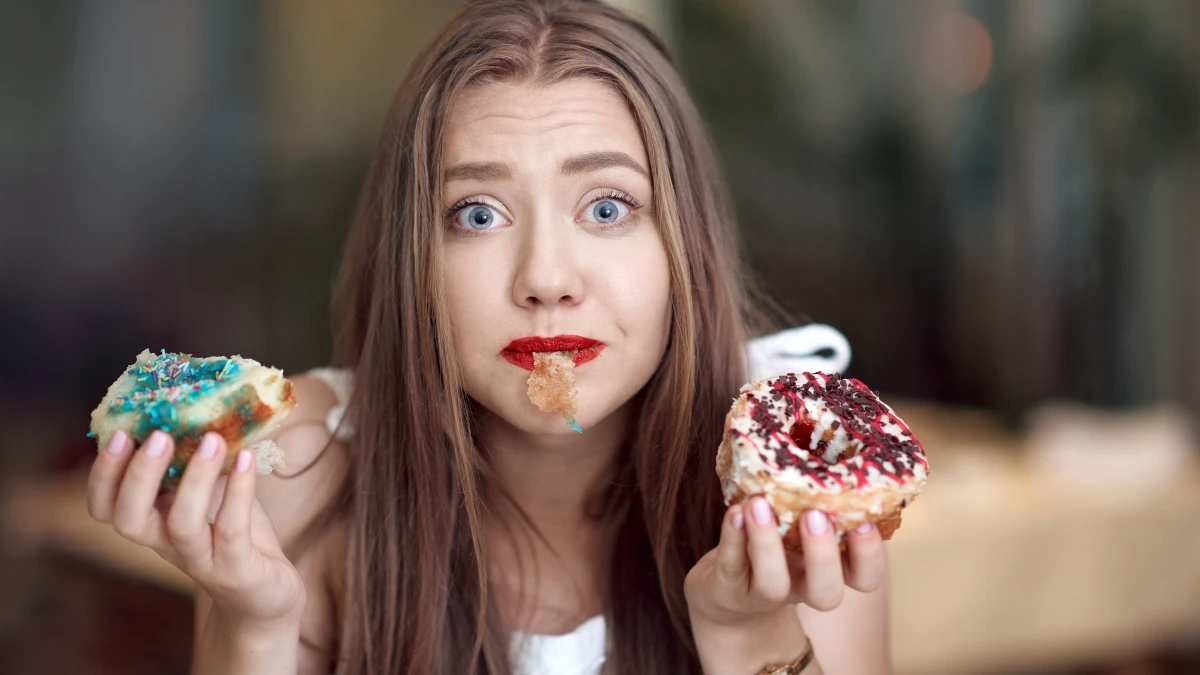
This is one of the clearest signs that your body is in the middle of a blood sugar crash. Your brain sees the dangerously low glucose levels as an emergency and sends out powerful signals to fix the problem immediately.
These signals come in the form of intense cravings for more sugar or simple carbohydrates.
This is a survival mechanism. Your brain is trying to get your blood sugar back up to a safe level as quickly as possible. It’s why you might find yourself desperately wanting another sweet treat right after finishing one.
However, this instinct is also what locks you into a destructive cycle. Giving in to the craving gives you a temporary lift, but it also starts another spike-and-crash rollercoaster, making the problem worse.
6. Bloating and Gas

A large amount of sugar can throw your gut’s delicate environment out of balance. Your digestive system is home to trillions of bacteria, both good and bad. Excess sugar acts as a superfood for the less helpful bacteria and yeast that live in your gut.
When these organisms feast on sugar, they ferment it. This fermentation process produces gas as a byproduct, which can lead to uncomfortable bloating, cramping, and stomach pain.
Foods that contain high-fructose corn syrup can be especially bad for this. Your body has a hard time absorbing it, so it often passes into your intestines. Where it can draw in water and make bloating and digestive issues even worse.
7. Being Thirsty and Peeing a Lot
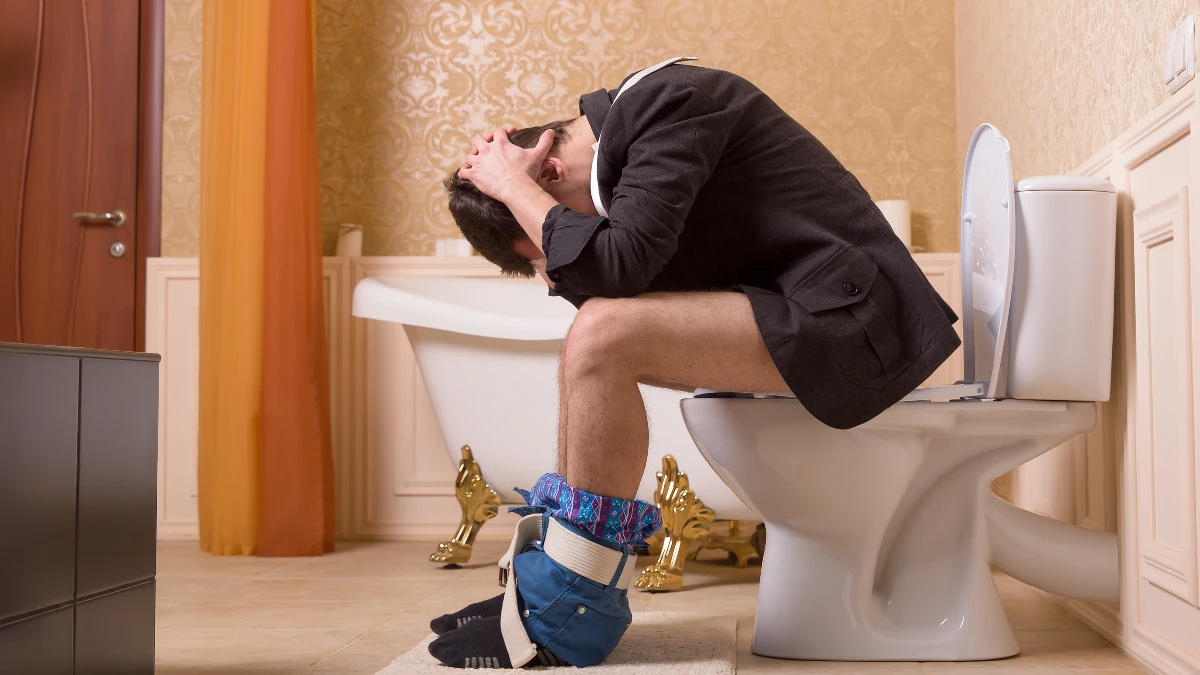
These two symptoms are classic signs of the first part of the sugar cycle: high blood sugar. When there is too much glucose circulating in your bloodstream, your kidneys have to work overtime to filter it all out.
Your kidneys can reabsorb the glucose and send it back into the body. But when they are overwhelmed by too much sugar, they can’t keep up. The excess sugar is then flushed out of your body in your urine.
As the sugar leaves, it pulls a lot of fluid from your body’s tissues along with it. This process is what causes you to have to urinate more frequently. And, as a result, can leave you feeling very dehydrated and thirsty.
8. Skin Breakouts and Puffiness

A high-sugar meal causes a big spike in the hormone insulin. High levels of insulin can, in turn, increase the production of certain hormones called androgens and ramp up oil production in your skin.
This excess oil, combined with the inflammation that sugar causes throughout the body, creates the perfect conditions for clogged pores and acne breakouts.
Over the long term, a high-sugar diet can also make your skin age faster. Too much sugar in your blood leads to the formation of harmful molecules that damage the collagen and elastin in your skin.
These are the proteins responsible for keeping your skin firm and youthful. When they are damaged, your skin can lose its firmness, leading to premature wrinkles and sagging.
9. Poor, Restless Sleep
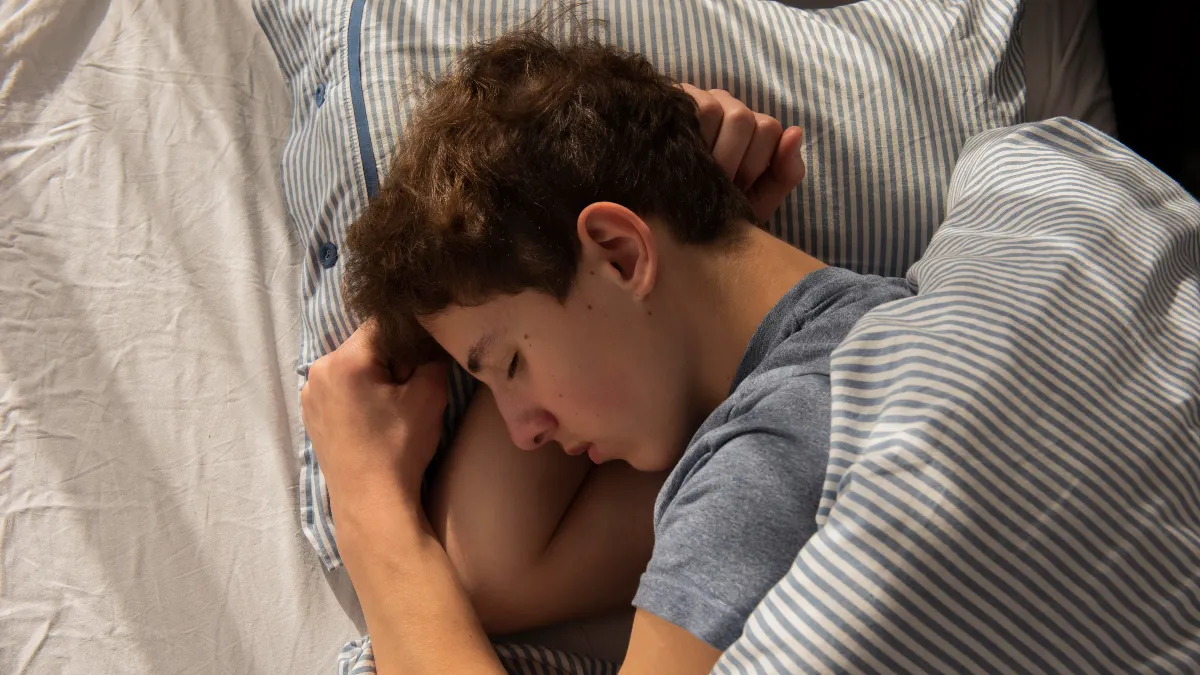
While the initial sugar crash might make you feel drowsy, eating too much sugar, especially in the evening, can seriously harm your sleep quality. The hormonal rollercoaster of adrenaline and cortisol, along with the possibility of your blood sugar dropping even lower during the night.
Can prevent you from getting deep, restorative sleep. Research has shown that people with high-sugar diets tend to sleep less deeply and wake up more often during the night.
This leaves you feeling tired and unrefreshed when you wake up in the morning. This lack of quality sleep can then make you crave more sugar the next day to get through the fatigue, which only continues the cycle.
10. Feeling Shaky, Sweaty, or Jittery

These very physical symptoms are a direct result of the adrenaline rush that happens when your blood sugar crashes. As your body tries to quickly fix the low glucose levels, it floods your system with this “fight-or-flight” hormone as a defense mechanism.
This surge of adrenaline is what causes the distinct physical feelings of shakiness, especially in your hands. You might also break out in a cold sweat or feel clammy.
This hormonal response can also lead to feelings of anxiety and a racing heartbeat or heart palpitations. These are all clear signs that your body is under stress and working hard to get its energy supply back in balance.
How to Fix a Sugar Hangover: Your 5-Step Fast-Action Plan
The good news is you don’t have to just wait it out. You can take a few key steps to help your body recover and feel better in a few hours. This plan will help stabilize your blood sugar, rehydrate you, and fix the physical and emotional effects of a sugar binge.
| Symptom | What to Do Right Now |
| Headache | Drink a big glass of water. You can also take an over-the-counter pain reliever like ibuprofen if you need it. |
| Fatigue / Brain Fog | Go for a quick 10-15 minute walk, ideally outside. Don’t eat more sugar. Instead, have a protein-rich snack like a handful of nuts. |
| Bloating / Gas | Sip on warm peppermint, chamomile, or ginger tea. Stay away from all fizzy drinks, even sparkling water. |
| Intense Cravings | Drink a large glass of water and wait 15 minutes. If you still have the craving, chew sugar-free gum or eat a small piece of fruit with some nut butter. |
| Shakiness / Jitters | This is a sign of low blood sugar. Use the “15-15 rule”: eat 15 grams of fast-acting carbs (like 4 ounces of juice) and check how you feel in 15 minutes. |
Conclusion
A “sugar hangover” is a real physical reaction to too much sugar. The awful fatigue, headache, brain fog, and cravings are all caused by the spike and crash of your blood sugar.
But you don’t have to be powerless. You can recover fast by drinking lots of water, eating a meal with protein and fiber, and doing some gentle exercise. You can prevent it from happening again by eating regular, balanced meals and watching out for hidden sugars.
Knowing the signs of a sugar hangover is the first step to beating it and getting your energy back.


